Lately, we’ve been thinking and talking a lot about the “Tagging Up” offensive rebounding system and felt it was worth revisiting. There hasn’t been a week this summer where we haven’t discussed with coaches their hopes of being a better offensive rebounding team this upcoming season, and all the benefits that go along with it. This unique “tagging up” approach, originally highlighted by Coach Aaron Fearne, has gained traction among teams worldwide, including Coach Tuomas Iisalo’s Bonn and Paris squads, who have successfully adopted and adapted it in their own unique ways. As more teams continue to tweak this system to fit their personnel, it’s clear that “Tagging Up” remains a compelling and evolving strategy in modern basketball.
Past podcast guest and UNC Charlotte Head Coach Aaron Fearne is highly regarded in coaching circles worldwide for his understanding and teaching of the game. In recent years, one area of particular interest in Coach Fearne’s basketball philosophy is the concept of “Tagging Up.”
Below, we’ll break down the “Tagging Up” concept into three sections:
- Overall Philosophy – What is It? Why Do It?
- Rules and Teaching Points – How It Works
- Taxes & Fines – What Coaches Should Be Willing and Not Willing to Pay When Tagging Up
1. Tagging Up – Philosophy
To start, Tagging Up can be defined as:
A system where all five players run to the backs of their opponents on an offensive shot, driving them into the paint, and staying matched up with those players in transition defense.
So, is Tagging Up an Offensive Rebounding System, or a Defensive Transition System? As Coach Fearne explains on the podcast, it’s both.
For a visual, here’s a look at the major transitional phases of basketball and where the Tagging Up system fits in…
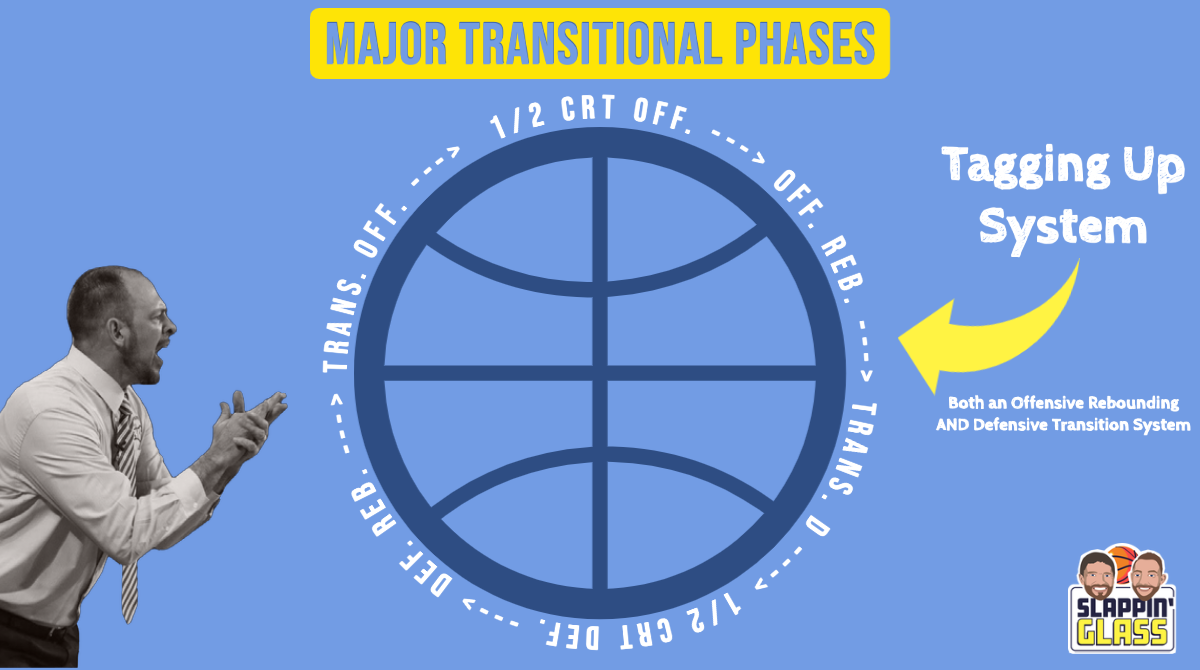 |
The Tagging Up system is both an offensive rebounding and defensive transition philosophy, with the rules of the system serving as a crucial link between these two phases of the game.
As Coach Fearne discusses, the benefits of this system include increased offensive rebounding efficiency and extra possessions, a decrease in defensive transition baskets allowed, and an overall increase in the physicality of the team.
2. Rules and Teaching Points
What makes Tagging Up effective is the strict adherence to its rules. Below are some key rules, starting with the offensive rebounding aspect of the system:
Tag Up on the High Side & “Scrum In”
Coach Fearne emphasizes that this is one of the most important elements of Tagging Up. On an offensive shot, all five players must aggressively move toward the basket to rebound and get to the high side of their matchup. Here’s a closer look…
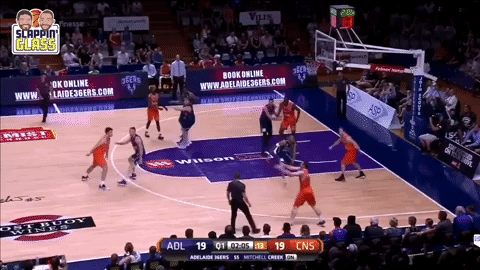 |
Coach Fearne uses the Rugby term of “scrumming” the defense into the lane when attacking the offensive glass from the High Side.
 |
When all players Tag Up and “Scrum” their opponents on the High Side, it not only creates excellent 50/50 offensive rebounding opportunities but also keeps their matchups in front of them. This positioning makes it easier to immediately match up in transition, whether after a made or missed shot.
Made Shot – Transition Defense
On a made shot, Tagging Up enables a team to quickly disrupt the opponent’s ability to inbound the ball and initiate their offense. After the shot is made, players will stay with their matchups, keeping them in front and denying easy passes to make it more difficult for the opposing team to start their offense.
Missed Shot – Stay and Flood the Middle
If all five players follow the simple rules of moving to the High Side of their tag and “scrumming” their opponents toward the middle of the key, it makes the next task—slowing down and “flooding the ball” after a missed shot—much easier and more effective.
When a shot is missed, all players will stay with their tag as they transition back on defense. The player guarding the ball will stay on the ball, while the players on the strong side of the floor will sprint back to prevent any straight-line passes up the same side as the ball. The remaining players will “flood the middle,” creating a wall of bodies to help mitigate any threats through the middle of the floor, whether by pass, drive, or Drag Screen.
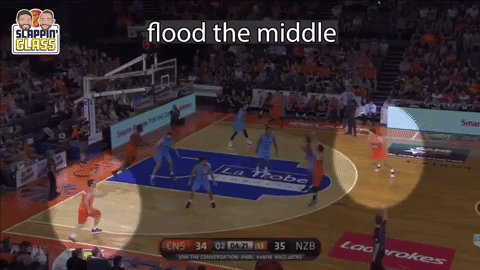 |
3. Taxes and Fines
Like any system or style of play, nothing is perfect and each comes with its own set of risks and rewards. We discussed with Coach Fearne the “Taxes” of Tagging Up—the costs or risks a coach is willing to accept—and the “Fines” of Tagging Up—the costs or risks that are unacceptable and could lead to failure.
Let’s start with the Fines, the situations that can seriously hurt your team when running the Tagging Up system.
Fine #1 – Shooter Not Staying with the Closeout
A common question when Tagging Up is: what should the shooter do after they release the shot? The answer: after releasing the shot, the shooter must stay with the player who closed out on them, whether it was a short closeout or a fly-by. The Fine for not doing this can be severe, potentially resulting in a wide-open layup on the other end since, unlike in most systems, there isn’t a designated player “getting back” on defense…
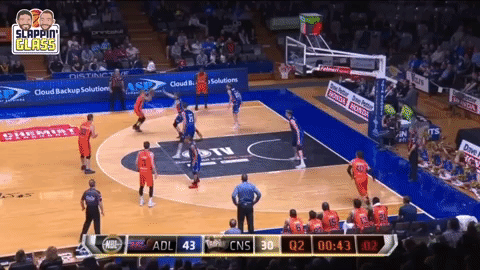 |
Fine #2 – Outrunning the Coverage
What if I have a great offensive rebounder? Can I let them go and chase the rebound wherever they want? Coach Fearne’s answer is a firm “NO.” Rules are rules, and here’s why: In the Tagging Up system, if a player outruns their matchup and doesn’t secure the rebound, they risk leaving the team at a numbers disadvantage in transition. This can give the opposing offense a significant advantage, leading to easy scoring opportunities on the other end…
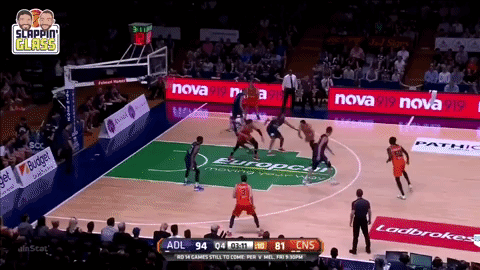 |
Fine #3 – Running Under a Block-Out
This is where the discipline of the system becomes crucial. As tempting as it may be to slip underneath a block-out to grab a rebound, rather than always moving to the High Side, doing so can have the same consequences as the “Outrunning the Coverage” Fine mentioned above. If the offensive rebound isn’t secured, it will once again leave the opposing team with a numbers advantage in transition, increasing the risk of an easy score.
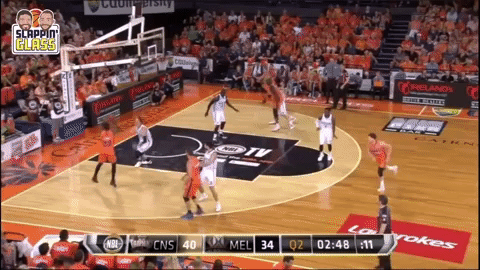 |
The Taxes…
Though taxes are never fun to pay, they are the expected costs associated with your chosen style of play. According to Coach Fearne, here are a few of the taxes coaches must be willing to pay when running the Tagging Up system:
Cross Matches in Transition: There will be plenty of instances where a defensive big closes out on a perimeter shooter, who then becomes their matchup in transition.
- Minimizing the Tax: While it takes a high-level offense to fully exploit a mismatch in transition, coaches can mitigate this by 1) working on their defense to safely switch back to preferred matchups once the ball is in the half-court, or 2) doubling the post if a guard is caught battling an inside mismatch.
Offensive Rebounding Fouls: Given the overall aggressiveness and physicality of the Tagging Up system, coaches will have to accept more offensive foul calls as their team “scrums” for rebounds. Coach Fearne considers this a tax worth paying, as the benefits of extra possessions and a physical edge outweigh the risks of a few offensive fouls per game.
- Minimizing the Tax: On the podcast, Coach Fearne discusses teaching points and the conversations he has with players who get into foul trouble, guiding them to be more cautious about how they Tag Up without losing their edge.
Tremendous Mental and Physical Effort Required: This system is not for the soft, selfish, or lazy (but then, what system is?). It demands both physical and mental effort throughout the entire game.
- Minimizing the Tax: First, find the right type of players who are willing to buy into the physicality of the system. Second, integrate the mentality and concepts of Tagging Up into every drill in practice, so your players are fully ingrained in the system during all phases of the game. Coach Fearne also touches on this in the podcast.
To complement today’s newsletter, here is our breakdown video of the Tagging Up system, featuring clips provided by Coach Fearne, on SGTV.
